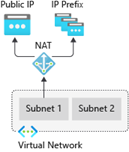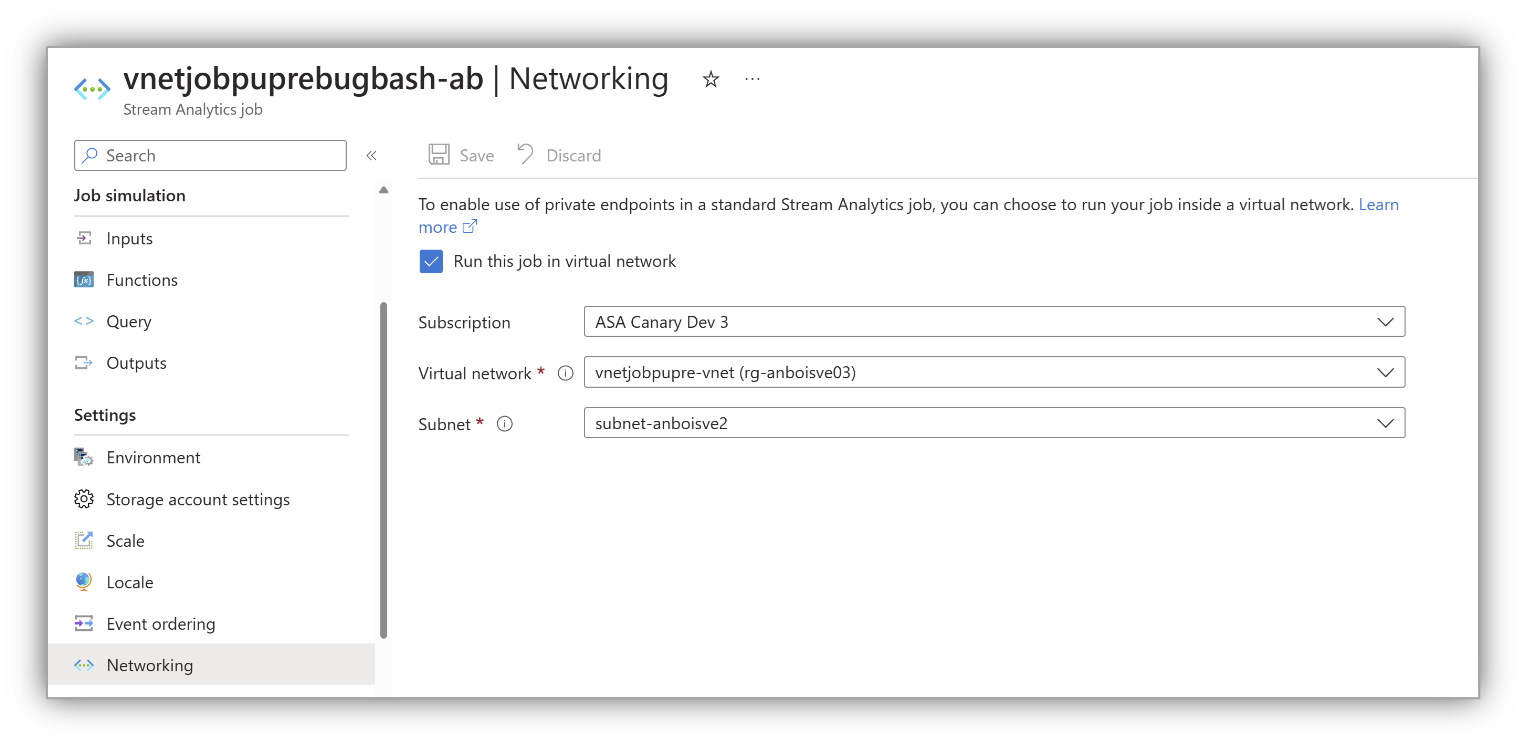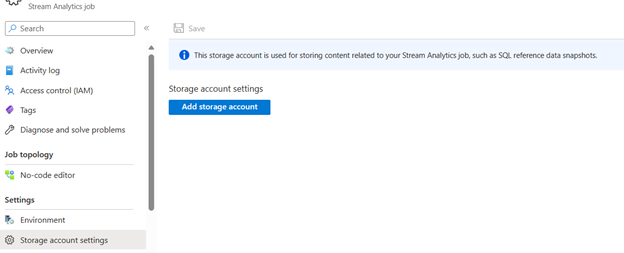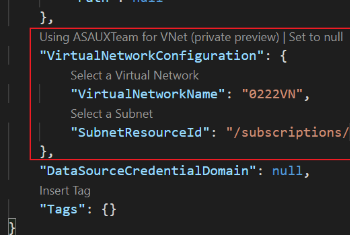Run your Azure Stream Analytics job in an Azure Virtual Network
This article describes how to run your Azure Stream Analytics (ASA) job in an Azure virtual network.
Overview
Virtual network support enables you to lock down access to Azure Stream Analytics to your virtual network infrastructure. This capability provides you with the benefits of network isolation and can be accomplished by deploying a containerized instance of your ASA job inside your Virtual Network. Your virtual network injected ASA job can then privately access your resources within the virtual network via:
- Private endpoints, which connect your virtual network injected ASA job to your data sources over private links powered by Azure Private Link.
- Service endpoints, which connect your data sources to your virtual network injected ASA job.
- Service tags, which allow or deny traffic to Azure Stream Analytics.
Availability
Currently, this capability is only available in select regions: East US, East US 2, West US, West US 2, Central US, North-Central US, Central Canada, West Europe, North Europe, Southeast Asia, Brazil South, Japan East, UK South, Central India, Australia East, France Central, Germany West Central, and UAE North. If you're interested in enabling virtual network integration in your region, fill out this form. Regions are added based on demand and feasibility. We will notify you if we are able to accommodate your request.
Requirements for virtual network integration support
A General purpose V2 (GPV2) Storage account is required for virtual network injected ASA jobs.
Virtual network injected ASA jobs require access to metadata such as checkpoints to be stored in Azure tables for operational purposes.
If you already have a GPV2 account provisioned with your ASA job, no extra steps are required.
Users with higher scale jobs with Premium storage are still required to provide a GPV2 storage account.
If you wish to protect storage accounts from public IP based access, consider configuring it using Managed Identity and Trusted Services as well.
For more information on storage accounts, see Storage account overview and Create a storage account.
An Azure Virtual Network, you can use existing or create one.
An operational Azure Nat Gateway, see IMPORTANT note below.
Important
ASA virtual network injected jobs use an internal container injection technology provided by Azure networking.
To enhance the security and reliability of your Azure Stream Analytics jobs, you will need to either:
Configure a NAT Gateway: This will ensure that all outbound traffic from your VNET is routed through a secure and consistent public IP address.
Disable Default Outbound Access: This will prevent any unintended outbound traffic from your VNET, enhancing the security of your network.
Azure NAT Gateway is a fully managed and highly resilient Network Address Translation (NAT) service. When configured on a subnet, all outbound connectivity uses the NAT gateway's static public IP addresses.

For more information about Azure NAT Gateway, see Azure NAT Gateway.
Subnet Requirements
Virtual network integration depends on a dedicated subnet.
When configuring your delegated subnet, it is crucial to consider the IP range to accommodate both current and future requirements for your ASA workload. Since the subnet size cannot be modified once established, it is recommended to select a subnet size that can support the potential scale of your job. Additionally, be aware that Azure Networking reserves the first five IP addresses within the subnet range for internal use.
The scale operation affects the real, available supported instances for a given subnet size.
Considerations for estimating IP ranges
- Make sure the subnet range doesn't collide with ASA’s subnet range. Avoid IP range 10.0.0.0 to 10.0.255.255 as it's used by ASA.
- Reserve:
- Five IP addresses for Azure Networking
- One IP address is required to facilitate features such as sample data, test connection, and metadata discovery for jobs associated with this subnet.
- Two IP addresses are required for every six streaming unit (SU) or one SU V2 (ASA’s V2 pricing structure is launching July 1, 2023, see here for details)
Releasing the subnet
When you indicate virtual network integration with your Azure Stream Analytics job, Azure portal automatically delegates the subnet to the ASA service. Azure undelegates the subnet in the following scenarios:
- You inform us that virtual network integration is no longer needed for the last job associated with specified subnet via the ASA portal (see the how-to section).
- You delete the last job associated with the specified subnet.
Intra-Subnet traffic
The subnet configuration must enable intra-subnet network traffic. This means that it must allow inbound and outbound traffic where both the source and destination IP addresses reside within the same subnet. Learn more here.
Last job
Several Stream Analytics jobs can utilize the same subnet. The last job here refers to no other jobs utilizing the specified subnet. When the last job has been deleted or removed by associated, Azure Stream Analytics releases the subnet as a resource, which was delegated to ASA as a service. Allow several minutes for this action to be completed.
Set up virtual network integration
Azure portal
From the Azure portal, navigate to Networking from menu bar and select Run this job in virtual network. This step informs us that your job must work with a virtual network:
Configure the settings as prompted and select Save.

VS Code
In Visual Studio Code, reference the subnet within your ASA job. This step tells your job that it must work with a subnet.
In the
JobConfig.json, set up yourVirtualNetworkConfigurationas shown in the following image.
Set up an associated storage account
On the Stream Analytics job page, select Storage account settings under Configure on the left menu.
On the Storage account settings page, select Add storage account.
Follow instructions to configure your storage account settings.

Important
- To authenticate with connection string, you must disable the storage account firewall settings.
- To authenticate with Managed Identity, you must add your Stream Analytics job to the storage account's access control list for Storage Blob Data Contributor role and Storage Table Data Contributor role. If you do not give your job access, the job will not be able to perform any operations. For more information on how to grant access, see Use Azure RBAC to assign a managed identity access to another resource.
Permissions
You must have at least the following Role-based access control permissions on the subnet or at a higher level to configure virtual network integration through Azure portal, CLI or when setting the virtualNetworkSubnetId site property directly:
| Action | Description |
|---|---|
Microsoft.Network/virtualNetworks/read |
Read the virtual network definition |
Microsoft.Network/virtualNetworks/subnets/read |
Read a virtual network subnet definition |
Microsoft.Network/virtualNetworks/subnets/join/action |
Joins a virtual network |
Microsoft.Network/virtualNetworks/subnets/write |
Optional. Required if you need to perform subnet delegation |
If the virtual network is in a different subscription than your ASA job, you must ensure that the subscription with the virtual network is registered for the Microsoft.StreamAnalytics resource provider. You can explicitly register the provider by following this documentation, but it's automatically registered when creating the job in a subscription.
Limitations
- Virtual network jobs require a minimum of one SU V2 (new pricing model) or six SUs (current)
- Make sure the subnet range doesn't collide with ASA subnet range (that is, don't use subnet range 10.0.0.0/16).
- ASA jobs and the virtual network must be in the same region.
- The delegated subnet can only be used by Azure Stream Analytics.
- You can't delete a virtual network when it's integrated with ASA. You must disassociate or remove the last job* on the delegated subnet.
- We don't support Domain Name System (DNS) refreshes currently. If DNS configurations of your virtual network are changed, you must redeploy all ASA jobs in that virtual network (subnets also need to be disassociated from all jobs and reconfigured). For more information, see Name resolution for resources in Azure virtual networks for more information.
Access on-premises resources
No extra configuration is required for the virtual network integration feature to reach through your virtual network to on-premises resources. You simply need to connect your virtual network to on-premises resources by using ExpressRoute or a site-to-site VPN.
Pricing details
Outside of basic requirements listed in this document, virtual network integration has no extra charge for use beyond the Azure Stream Analytics pricing charges.
Troubleshooting
The feature is easy to set up, but that doesn't mean your experience is problem free. If you encounter problems accessing your desired endpoint, contact Microsoft Support.
Note
For direct feedback on this capability, reach out to askasa@microsoft.com.
